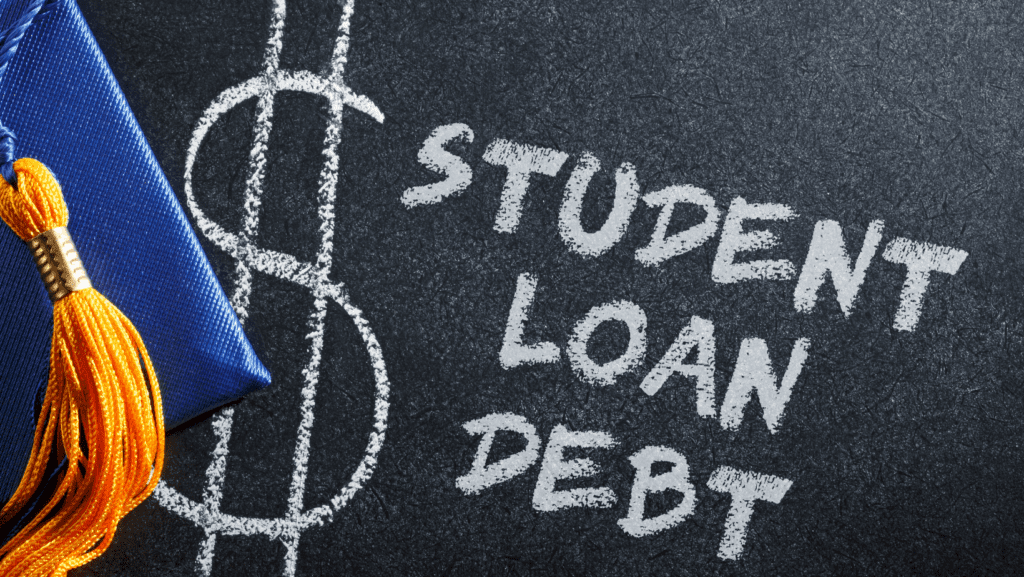
Let’s not sugarcoat it: student loan debt is a significant problem that many Canadians face. Despite the joy and opportunities that come with higher education, the burden of paying back these loans can dampen the overall experience. The term ‘student loan debt forgiveness’ often floats around as a possible solution, but what does it truly mean for Canadians? This comprehensive guide aims to debunk the myths, address the realities, and provide straightforward advice about managing your student loan debt in Canada.
Understanding Student Loan Debt Forgiveness
Student loan debt forgiveness essentially means the wiping off or reduction of the debt you owe for your education. However, the Canadian government does not provide a one-size-fits-all debt forgiveness policy. What we do have are several programs that lower your loan repayment burden, effectively functioning as debt forgiveness mechanisms.
The Repayment Assistance Plan (RAP)
The Repayment Assistance Plan (RAP), a federal initiative, serves as a financial lifeline for students struggling with loan repayments. This program’s central aim is to reduce the loan repayment amounts by tailoring them to your income and family size.
According to the newly announced regulations in the 2023 Budget, if your income falls under the set thresholds, the Government of Canada could cover the interest that isn’t met by your reduced payment. This provision aims to prevent the accumulation of unpaid interest, thereby easing the debt burden on the borrower.
Additionally, the RAP offers enhanced assistance to individuals with a permanent disability. Should these borrowers continue to face repayment difficulties despite reduced payments for a period of 10 years, the remaining loan balance may be written off. This feature embodies the core principle of student loan debt forgiveness, offering significant relief to those in prolonged financial distress.
Loan Forgiveness for Medical Professionals
Doctors, nurses, and nurse practitioners often carry the weight of substantial student loans due to the high cost of their education. To alleviate this, the Canada Student Loan Forgiveness for Family Doctors, Nurses, and Nurse Practitioners program was introduced. Eligible medical professionals serving in rural or remote communities can receive loan forgiveness of up to $8,000 per year (for doctors) and $4,000 per year (for nurses), over five years.
Provincial Student Loan Forgiveness Programs
Beyond these federal measures, several provinces offer loan forgiveness schemes. For instance, British Columbia forgives the student loans of graduates who take up public sector jobs in underserved rural or remote communities within the province. Another example is the New Brunswick Timely Completion Benefit program, which forgives provincial student loan amounts exceeding $32,000 for those who complete their undergraduate degree on time.
Strategies to Tackle Student Loan Repayment
Student loan debt can be a hard reality to deal with. If you’re struggling with repayments, consider these practical steps:
- Apply for the Repayment Assistance Plan (RAP): If you qualify for RAP, your monthly loan repayment amount could be reduced significantly, or even eliminated based on your financial situation.
- Check provincial loan forgiveness programs: Your province may offer student loan forgiveness programs, which could substantially reduce your student debt.
- Consult a financial advisor: Professional financial advice can help you navigate your way through your student loans and create a manageable repayment plan tailored to your circumstances.
- Stay informed: Keep track of changes to policies or programs relating to student loans, as these may affect your repayment strategy.
Facing the Reality of Student Loans: Financial Management and Avoiding the Pitfalls of Overspending
Navigating the reality of student loans can be daunting. Understanding the financial implications and making conscious choices to manage your spending can significantly affect your financial situation post-graduation. The first step is to acknowledge that managing your student loan effectively is as much a part of your education as your academic or professional learning.
Budgeting 101
The most effective tool at your disposal is a budget. A budget doesn’t limit your freedom, but instead gives you control over your money. To create a student budget, list your sources of income, including part-time work, parental contributions, scholarships, and student loans. Then, list your monthly expenses, such as tuition, housing, groceries, transportation, and personal care. Don’t forget occasional costs like textbooks or travel.
Once you have your income and expenses outlined, you can begin to identify areas where you might cut back. Look for opportunities to save – can you share textbooks or supplies with classmates? Would a transit pass be cheaper than daily fares? Small changes can add up over time.
Frugal Living
Learn to live frugally. This doesn’t mean denying yourself every pleasure but being conscious about your spending choices. Cook meals at home, take advantage of student discounts, and enjoy free or low-cost campus activities. Resist the temptation to keep up with others’ spending habits. Remember, it’s about your financial health, not impressing your peers.
Avoid Credit Pitfalls
Be cautious about credit cards. While they can be a convenient financial tool, they can also lead to debt if not managed carefully. Only charge what you can afford to pay off in full each month. Never view credit as “free money”.
Emergency Funds
Consider setting up an emergency fund, even if you can only contribute a small amount each month. This fund can provide a financial safety net for unexpected costs like car repairs or medical bills, preventing you from falling deeper into debt.
Part-Time Work and Internships
Seek out part-time work or paid internships. Not only will this provide a source of income, but it can also add valuable experience to your resume. Remember, your education isn’t just about what you learn in the classroom, but also about preparing for your future career.
Remember Your Goals
Finally, never lose sight of your goals. Your education is an investment in your future. Every financial decision you make should support that investment, not undermine it.
While student loans can be a financial burden, they don’t have to dictate your life. By employing effective financial strategies and making thoughtful spending decisions, you can manage your student loans and steer clear of the common overspending traps associated with the college experience. Remember, the habits you develop now will set the stage for your financial health long after graduation.
Closing Thoughts
While there is no magic wand solution to eliminate student loan debt in Canada, several mechanisms can ease the burden. Understanding these options and proactively managing your loan can go a long way in helping you tackle your student debt. Remember, the journey may be challenging, but with the right information and approach, it is not insurmountable.
FAQs
- What is the Repayment Assistance Plan (RAP) and how can it help me?
- The Repayment Assistance Plan is a federal program designed to help Canadians struggling with student loan repayments. Based on your income and family size, the RAP adjusts your monthly payments to a manageable level or even eliminates them if your income is low enough. In certain cases, such as for individuals with a permanent disability, RAP could eventually lead to loan forgiveness.
- How does the Canada Student Loan Forgiveness for Family Doctors, Nurses and Nurse Practitioners program work?
- This program was designed to help medical professionals working in rural or remote communities reduce their student debt. Eligible family doctors and residents in family medicine can have up to $8,000 per year of their loan forgiven for up to five years, and nurses and nurse practitioners can have up to $4,000 per year forgiven for up to five years.
- Are there provincial programs for student loan forgiveness in Canada?
- Yes, several provinces in Canada have their own student loan forgiveness programs. For example, British Columbia offers a Loan Forgiveness Program for graduates who work in public sector jobs in rural or remote communities, while New Brunswick’s Timely Completion Benefit program forgives provincial student loan debt exceeding $32,000 for students who complete their undergraduate degree within the expected time frame.
- I’m struggling with my student loan repayment. What are my first steps?
- First, consider applying for the Repayment Assistance Plan (RAP) if you haven’t already. This could significantly reduce your monthly payments. Next, research whether your province offers any loan forgiveness programs. If you’re unsure about your options, consider seeking advice from a financial advisor. Remember to keep yourself informed about any changes to student loan policies and programs.
- Q: Is there a complete student loan debt forgiveness policy in Canada?
- As of now, Canada does not offer a blanket student loan debt forgiveness policy. However, several federal and provincial programs are designed to reduce the burden of student loans, which can lead to partial or complete loan forgiveness under specific circumstances.
Additional Resources
- Government of Canada – How it works: This is the official government site that provides comprehensive information on all aspects of student loans and grants in Canada, including RAP.
- Credit Counselling Canada: This organization provides resources and information related to managing debt, including student loan debt. It offers information about RAP and student loan repayment.
- Wealth Solutions Hub:





